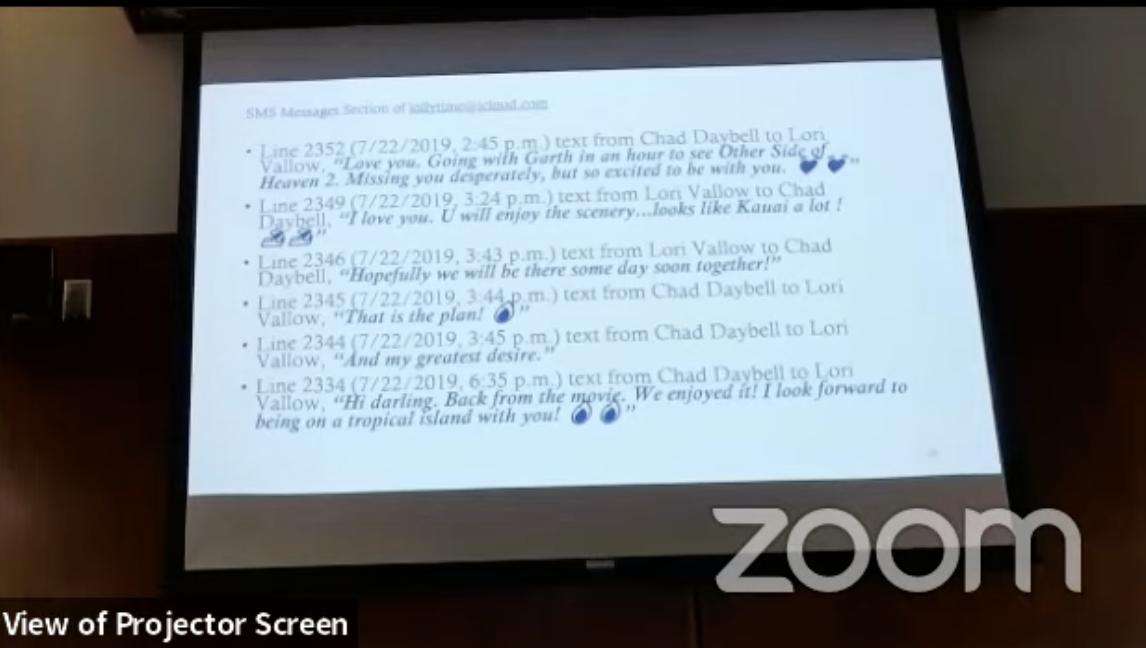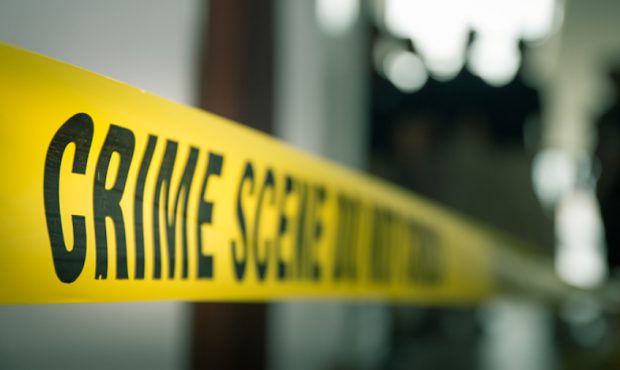Obama Presses For Voting Rights In Pointed Eulogy Honoring John Lewis
Jul 30, 2020, 2:00 PM
Inside Dr. Martin Luther King Jr.’s church in Atlanta on Thursday, the nation’s first Black president — who has acknowledged there was a Black president only because of what John Lewis sacrificed — delivered a eulogy for the civil rights icon and eventual congressman that went well beyond pure remembrance.
In words that were both highly specific and at times more oblique, Obama declared Lewis’ lifelong battle for racial equality to be ongoing and stated explicitly that forces in power today are working to undermine it.
Drawing a direct line between the bridge in Selma, Alabama, where Lewis was bloodied by state troopers in 1965 and the protests this summer following police killings of Black Americans, Obama delivered his most forceful address since leaving office, casting the actions of his successor — who avoided any in-person remembrances for Lewis, though three of his four living predecessors made the journey — as corrosive for democracy.
“We may no longer have to guess the number of jelly beans in a jar to cast a ballot, but even as we sit here there are those in power that are doing their darnedest to discourage people from voting,” Obama said, hours after President Donald Trump suggested on Twitter that November’s presidential contest be delayed because of the unproven potential for fraud.
As Trump wages a reelection campaign reliant on racist tropes and a vague notion of “heritage” that many see rooted in an outdated vision of the country, Obama said Lewis would eventually be remembered as another type of national hero.
“America was built by John Lewises,” Obama said. “He, as much as anyone in our history, brought this country a little bit closer to our highest ideals. And someday, when we do finish that long journey towards freedom, when we do form a more perfect union … John Lewis will be a founding father of that fuller, fairer, better America.”
It was a dramatic return to the political fray for a former president who has steadfastly worked to avoid becoming a foil for Trump, even as he frets privately and to Democratic donors about Trump’s actions and words.
But it was also a deeply personal recognition of a life Obama admitted was necessary for his own political ascent.
“Imagine the courage of two people Malia’s age — younger than my oldest daughter — on their own, to challenge an entire infrastructure of oppression,” he said, evoking his 22-year-old eldest child. “John was only 20 years old but he pushed all 20 of those years onto the center of the table.”
At a moment when the country is reckoning anew over questions of systemic racism following the police killings of George Floyd, Breonna Taylor and countless other Black and Brown Americans, Thursday’s funeral was a measuring moment: Both a time to reflect on the grainy black-and-white newsreels of another generation’s struggle and an opportunity to assess where that struggle continues to come up short.
It was the type of remembrance that marks the passage of a nation’s history, provides a record of its highest and lowest moments and lays down a marker for the type of person — the type of hero — deserving of the country’s attention and respect.
Lewis’ own words kicked off the day of remembrance, with a post-humous op-ed in The New York Times, that echoed the principles with which he lived his life.
“When you see something that is not right, you must say something. You must do something. Democracy is not a state. It is an act, and each generation must do its part to help build what we called the Beloved Community, a nation and world society at peace with itself,” he wrote, recalling his own lessons from King.
“It is so fitting on the day of his service, he leaves us our marching orders: Keep moving,” former President Bill Clinton said during the funeral.
“He got into a lot of good trouble along the way but let’s not forget he also developed an absolutely uncanny ability to heal troubled waters,” Clinton added. “He thought that the open hand was better than the clenched fist.”
While not at all unexpected, the absence Thursday of the sitting president was conspicuous. Remembering heroes was once something Washington could agree on, an idea that has increasingly seemed to be a relic from another time.
Lewis’ funeral wasn’t the first high-profile memorial that Trump has skipped, and as both a lifetime member of the nation’s most exclusive club and a renowned grudge-holder, it likely will not be the last.
Yet however obvious it was, Trump’s decision to forgo paying his respects — which he declared decisively even before his aides could weigh the pros and cons — was still a stark reminder of the rabidly polarized era of politics over which he presides.
He has continued to stoke a racial divide that Lewis spent his life working to bridge. As the country buckled earlier this summer under racial tensions and outcry over police brutality, Trump harkened back to 1960s rhetoric that wouldn’t have been unfamiliar to Lewis, who was beaten and bloodied by police during the civil rights movement.
As Trump evoked “vicious dogs” that would restore order and used a phrase coined by a racist police chief in 1968 to warn that “when the looting starts the shooting starts,” Lewis encouraged protesters to continue the work that he started decades ago.
The comparisons to a darker era that many hoped had faded were made explicit in Obama’s eulogy.
“George Wallace may be gone, but we can witness our federal government sending agents to use tear gas and batons against peaceful demonstrators,” he said, referring to the segregationist Alabama governor who ran for president on a hard-right platform in 1968.
Even as recently as this week, Trump has used a rollback of a federal anti-segregation rule to appeal to White suburbanites, a tactic that seems to have a direct line to the racist policies Lewis was seeking to overturn half a century ago.
It’s hard to imagine how those messages or that messenger would have fit in at Lewis’ funeral. Yet political leaders have long put aside even their biggest differences to commemorate those few lives that can be said to have altered history.
“John and I had our disagreements, of course,” former President George W. Bush said during the funeral on Thursday. “But, in the America John Lewis fought for and in the America I believe in, differences of opinion are inevitable elements and evidence of democracy in action.”
Obama-Lewis vision of America
Speaking in 2015 at the 50th anniversary memorial of the “Bloody Sunday” march in Selma, Alabama — an event that brought together Republicans and Democrats alike — Obama seemed to predict an era of White nostalgia that would come to pass as a patriotic litmus test under Trump.
Citing marchers like Lewis who were beaten by state troopers as they crossed the Edmund Pettus Bridge on their way to Montgomery to demand voting rights, Obama said that was true patriotism — a stark contrast to Trump, who has decried protesters as un-American and intent on erasing history.
“That’s what it means to love America. That’s what it means to believe in America,” Obama said of the marchers, adding later: “That’s what America is, not stock photos or airbrushed history or feeble attempts to define some of us as more American as others.”
He repeated some of those themes Thursday, hailing Lewis’ example as one to emulate.
“That’s where real courage comes from — not from turning on each other but by turning towards one another,” Obama said. “Not by sowing hatred and division but by spreading love and truth. Not by avoiding our responsibilities to create a better America and a better world but by embracing those responsibilities with joy and perseverance. And discovering that, in our beloved community, we do not walk alone.”
That vision of America is not necessarily shared by Obama’s successor, who has used monuments and statues, including those to Confederate generals, as a rallying cry in his reelection bid.
Both men have governed during times of intense racial divide: Obama reckoned with racially charged protests in Missouri and Maryland during his second term, and Trump now confronts ongoing unrest and outcry over the more recent police killings.
It was always unlikely that Obama would forgo the opportunity on Thursday to raise, again, the issues of racial disparity that continue to grip the nation.
In his speech, Obama listed a series of items that he said would make voting more fair and ensure every American is enfranchised: restoring the Voting Rights Act, allowing former inmates to vote, adding polling locations, making Election Day a federal holiday and allowing Washington, DC, and Puerto Rico to have full representation in Congress.
He also called for an end to the filibuster, the Senate rule that has allowed the minority party to stall legislation and that Obama called a remnant of Jim Crow.
Obama has used funerals in the past to deliver searing speeches on race — most notably during a eulogy for the murdered pastor of a Charleston church that ended with a sung verse of “Amazing Grace.”
And while he has openly attributed the possibility of his election to forebears like Lewis — “I was only there because of the sacrifices he made,” Obama said he told Lewis at his inauguration — he has also been frank that neither the fact he was elected nor the efforts he made while in office have been enough to combat still-existent racial divides.
“Thanks to him, we now all have our marching orders — to keep believing in the possibility of remaking this country we love until it lives up to its full promise,” Obama said in his statement following Lewis’ death earlier this month.
Nearly every other American political leader in Washington — including Vice President Mike Pence, White House chief of staff Mark Meadows, Senate Majority Leader Mitch McConnell and Treasury Secretary Steven Mnuchin, along with Democrats such as former Vice President Joe Biden — paid in-person tribute to Lewis this week in some fashion.
A cursory acknowledgment
Trump did issue a cursory statement on Twitter following the civil rights leader’s death and ordered flags lowered: “Saddened to hear the news of civil rights hero John Lewis passing. Melania and I send our prayers to he and his family,” he tweeted.
It did not go unnoticed that his Twitter remembrance of the late television host Regis Philbin, who also died recently, was nearly three times as long.
In an era of intense political divides, Trump’s decision to avoid Lewis’ funeral is not surprising. Lewis refused to attend Trump’s inauguration in 2017 and declared him an illegitimate president. Trump subsequently said Lewis should focus on improving his district, calling it “crime infested.”
When Trump announced unequivocally that he would not travel to the Capitol to pay his respects, some aides were caught off-guard because the issue hadn’t been decisively settled on internally, one administration official said.
Trump’s distaste for the rituals of remembrance and tradition for people he dislikes have by now been well established. While he has shown an affinity for some trappings of his job, the President has little patience for its rituals when they do not revolve around him. Aides have said they have little interest in bringing Trump to places he is clearly unwelcome and could become a distraction.
He has shown similar disregard — and at times open hostility — for those idolized by most of the Washington establishment, at least in death. He was pointedly not invited to the funeral held in the Washington National Cathedral for Sen. John McCain, who was eulogized instead by two former presidents, George W. Bush and Obama.
Instead of attending that funeral, Trump played a round of golf and, according to aides, sulked at the attention and adulation being mounted upon one of his avowed nemeses. Later, he complained that McCain’s family never thanked him for approving certain aspects of the service.
The one prominent funeral that Trump did attend, for former President George H.W. Bush, remains the only time he’s come face-to-face with his living predecessors since his inauguration. The encounter, at least by the looks of video footage, was chilly.
This month, Trump removed portraits of the younger Bush and Clinton that were hanging prominently in the White House and moved them to a room used to store tablecloths and unused furniture.












